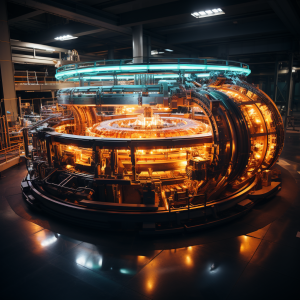
What are the differences between elastic and inelastic collisions?
Elastic and inelastic collisions are fundamental concepts in physics, specifically in the study of mechanics. The behavior of objects when they collide can tell us a great deal about their properties and the forces at work. To understand these two types of collisions, we first need to understand the principle of conservation of momentum and how it relates to energy transfer.
Principle of Conservation of Momentum
The principle of conservation of momentum states that the total linear momentum of a closed system (a system with no external forces acting upon it) remains constant, regardless of the actions within the system. In simple terms, the total momentum before a collision is equal to the total momentum after the collision. This principle is essential in analyzing both elastic and inelastic collisions.
Elastic Collisions
In an elastic collision, two crucial quantities are conserved: momentum and kinetic energy. This means that the total momentum and total kinetic energy of the system before the collision equals the total momentum and kinetic energy after the collision.
In the real world, perfectly elastic collisions are rare, but we see near-elastic collisions in certain situations. An example of a nearly elastic collision would be a game of pool or billiards. When one ball strikes another, the balls generally maintain their shape and spring away from each other after the collision. Some energy is lost to sound and deformation of the balls, making these collisions not perfectly elastic, but close.
Another example is the collision of atoms or molecules in a gas. These particles have negligible volume and virtually no deformation upon collision, making these interactions close to perfectly elastic.
In an elastic collision, the objects bounce off each other, and no kinetic energy is lost in deformation or heat, keeping the system’s total kinetic energy constant. However, the distribution of kinetic energy between the two bodies can change, and that’s what causes one object to slow down and the other to speed up.
Inelastic Collisions
In an inelastic collision, momentum is conserved, but kinetic energy is not. Some kinetic energy from the system before the collision is converted to another form of energy — usually thermal energy, sound, or material deformation. This loss of kinetic energy means that the total kinetic energy after the collision is less than before the collision.
A good example of an inelastic collision is a car crash. When two cars collide, they deform significantly, producing heat and sound and often moving together as one mass after the collision. The cars’ momentum is conserved (if we neglect external forces like friction), but kinetic energy is not conserved because it’s been converted into other forms.
In the most extreme inelastic collisions, known as perfectly inelastic collisions, the two objects stick together after the collision and move as one. Even in these cases, momentum is still conserved, but a significant amount of kinetic energy is lost to other forms.
Comparing Elastic and Inelastic Collisions
Elastic and inelastic collisions can be understood in terms of energy conservation. In an elastic collision, both momentum and kinetic energy are conserved. The objects involved don’t experience any permanent deformation and tend to bounce off each other, maintaining the overall kinetic energy of the system.
In contrast, an inelastic collision conserves momentum but not kinetic energy. Some kinetic energy is transformed into other forms, often causing the objects to slow down and possibly deform. In the most extreme cases, the objects involved in the collision might stick together and move as a single object afterwards.
Conclusion
Understanding the differences between elastic and inelastic collisions is fundamental to studying physics and engineering. It’s crucial in areas as diverse as materials science, car safety design, sports equipment development, and understanding natural phenomena. Remember, the key difference lies in whether kinetic energy is conserved during the collision (elastic) or not (inelastic), while momentum is conserved in both cases.




